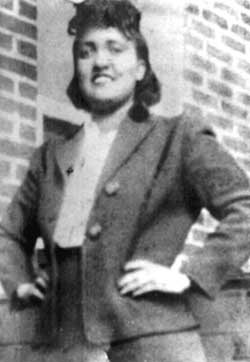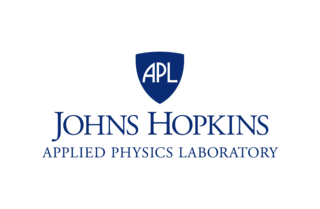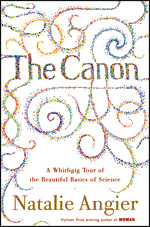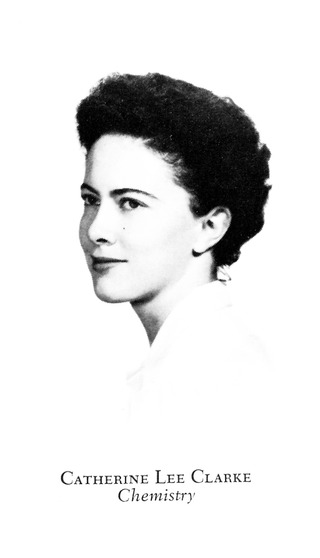
Maria Goeppert Mayer was a German-American theoretical physicist and Nobel laureate in Physics for proposing the nuclear shell model of the atomic nucleus. She was the second woman to win a Nobel Prize in physics, the first being Marie Curie. In 1986, the Maria Goeppert-Mayer Award for early-career women physicists was established in her honor.

Henrietta Lacks was an African-American woman whose cancer cells are the source of the HeLa cell line, the first immortalized human cell line and one of the most important cell lines in medical research. An immortalized cell line reproduces indefinitely under specific conditions, and the HeLa cell line continues to be a source of invaluable medical data to the present day.

Linda Susanne Gottfredson is an American psychologist and writer. She is professor emerita of educational psychology at the University of Delaware and co-director of the Delaware-Johns Hopkins Project for the Study of Intelligence and Society. She is best known for writing the 1994 letter "Mainstream Science on Intelligence", which was published in the Wall Street Journal in defense of Richard Herrnstein and Charles Murray's controversial book The Bell Curve (1994).

The Johns Hopkins University Applied Physics Laboratory is a not-for-profit university-affiliated research center (UARC) in Howard County, Maryland. It is affiliated with Johns Hopkins University and employs 8,700 people as of 2024. APL is the nation's largest UARC.

Dame Honor Bridget Fell, DBE, FRS was a British scientist and zoologist. Her contributions to science included the development of experimental methods in organ culture, tissue culture, and cell biology.

Eva Lucille Feldman is an American physician-scientist who is a leading authority on neurodegenerative disease. She serves as the Russell N. DeJong Professor of Neurology at the University of Michigan, as well as Director of the NeuroNetwork for Emerging Therapies and ALS Center of Excellence at Michigan Medicine. She was also named the James W. Albers Distinguished University Professor of Neurology.
Brigid L. M. Hogan FRS is a British developmental biologist noted for her contributions to mammalian development, stem cell research and transgenic technology and techniques. She is currently a Professor in the Department of Cell Biology at Duke University, Born in the UK, she became an American citizen in 2000.

Mary Adelia Davis Treat was a naturalist and correspondent of Charles Darwin. Treat's contributions to both botany and entomology were extensive—six species of plants and animals were named after her, including an amaryllis, Zephyranthes treatae, an oak gall wasp Bellonocnema treatae and three ant species Aphaenogaster mariae, Aphaenogaster treatae, and Dolichoderus mariae.

The Canon: A Whirligig Tour of the Beautiful Basics of Science is a book written by American science author Natalie Angier.
Margaret W. Rossiter is an American historian of science, and Marie Underhill Noll Professor of History of Science Emerita of the History of Science, at Cornell University. Rossiter coined the term Matilda effect for the systematic suppression of information about women in the history of science, and the denial of the contribution of women scientists in research, whose work is often attributed to their male colleagues.

Pamela Christine Ronald is an American plant pathologist and geneticist. She is a professor in the Department of Plant Pathology and conducts research at the Genome Center at the University of California, Davis and a member of the Innovative Genomics Institute at the University of California, Berkeley. She also serves as Director of Grass Genetics at the Joint BioEnergy Institute in Emeryville, California. In 2018 she served as a visiting professor at Stanford University in the Center on Food Security and the Environment.

Ida Freund was the first woman to be a university chemistry lecturer in the United Kingdom. She is known for her influence on science teaching, particularly the teaching of women and girls. She wrote two key chemistry textbooks and invented the idea of baking periodic table cupcakes, as well as inventing a gas measuring tube, which was named after her.

Anne Hope Jahren is an American geochemist and geobiologist at the University of Oslo in Norway, known for her work using stable isotope analysis to analyze fossil forests dating to the Eocene. She has won many awards in the field, including the James B. Macelwane Medal of the American Geophysical Union.

Catherine Clarke Fenselau is an American scientist who was the first trained mass spectrometrist on the faculty of an American medical school; she joined Johns Hopkins School of Medicine in 1968. She specializes in biomedical applications of mass spectrometry. She has been recognized as an outstanding scientist in the field of bioanalytical chemistry because of her work using mass spectrometry to study biomolecules.
Sofia S. "Topsy" Simmonds was an American biochemist who studied amino acid metabolism and peptide metabolism in E. coli. Following training with Vincent du Vigneaud at Cornell University, she spent most of her career at Yale University. After decades as a researcher and then associate professor there, Simmonds became a full professor of biochemistry in 1975, and later served as Associate Dean of Yale College. With her husband Joseph Fruton, Simmonds coauthored the influential General Biochemistry, the first comprehensive biochemistry textbook. Simmonds received the American Chemical Society's Garvan Medal in 1969.
Neena Betty Schwartz was an American endocrinologist and William Deering Professor of Endocrinology Emerita in the Department of Neurobiology at Northwestern University. She was best known for her work on female reproductive biology and the regulation of hormonal signaling pathways, particularly for the discovery of the signaling hormone inhibin. Schwartz was an active feminist advocate for women in science throughout her career; she was a founding member of the Association for Women in Science organization in 1971 and shared the founding presidency with Judith Pool. She also co-founded the Women in Endocrinology group under the auspices of the Endocrine Society, served terms as the president of the Endocrine Society and the Society for the Study of Reproduction, and was recognized for her exceptional mentorship of women scientists. In 2010, she published a memoir of her life in science, A Lab of My Own, in which she came out as lesbian.

Elaine Ann Ostrander is an American geneticist at the National Human Genome Research Institute (NHGRI) of the National Institutes of Health (NIH) in Bethesda, Maryland. She holds a number of professional academic appointments, currently serving as Distinguished and Senior Investigator and head of the NHGRI Section of Comparative Genomics; and Chief of the Cancer Genetics and Comparative Genomics Branch. She is known for her research on prostate cancer susceptibility in humans and for conducting genetic investigations with the Canis familiaris —the domestic dog— model, which she has used to study disease susceptibility and frequency and other aspects of natural variation across mammals. In 2007, her laboratory showed that much of the variation in body size of domestic dogs is due to sequence changes in a single gene encoding a growth-promoting protein.
Gagandeep Kang FRS is an Indian microbiologist and virologist who has been leading the work on enteric diseases, diarrheal infections and disease surveillance at the Bill & Melinda Gates Foundation since 2023.
Helen Pearson is a science journalist, author and Chief Magazine Editor for the journal Nature, where she oversees the journalism and opinion content. She is the author of The Life Project, a book about the British birth cohort studies, a series of longitudinal studies which have tracked thousands of people since their birth.

Betty Lou Raskin was an American chemist who researched plastics in the 1950s and 1960s. A Marylander, she grew up in Baltimore and obtained a chemistry degree to begin work at the radiation laboratory of Johns Hopkins University.














